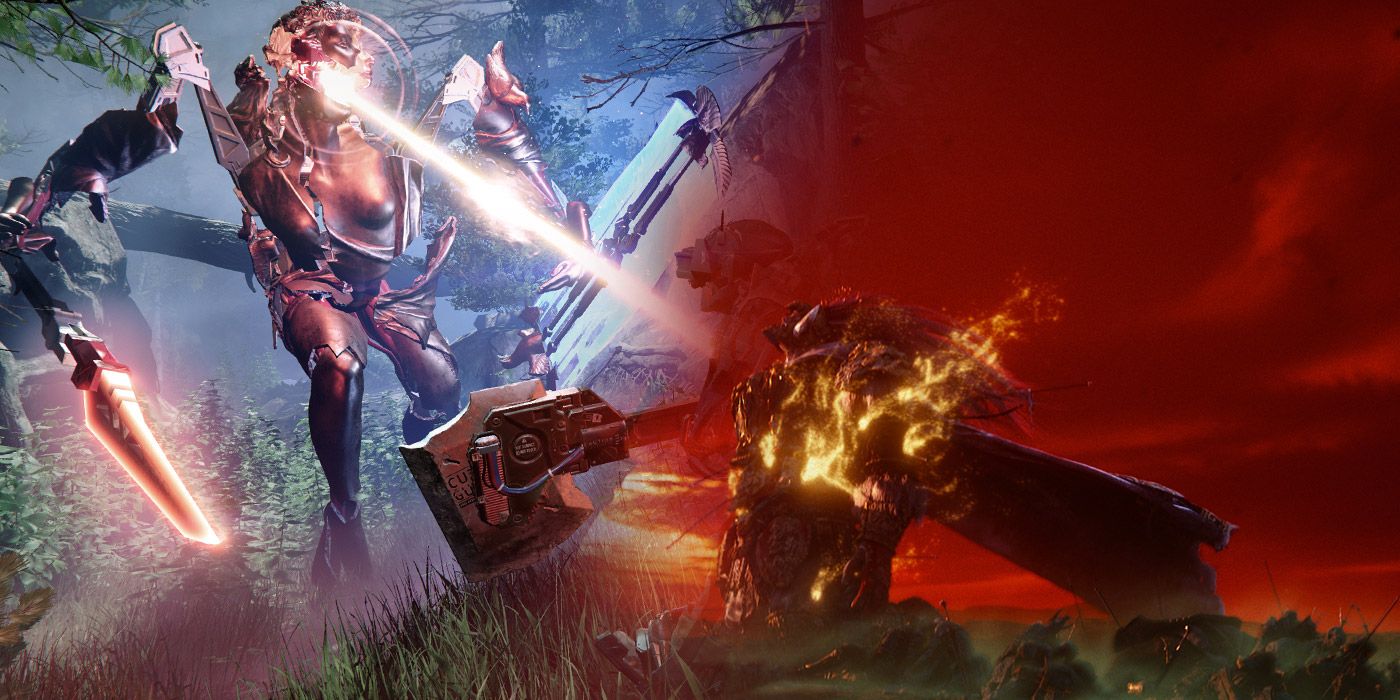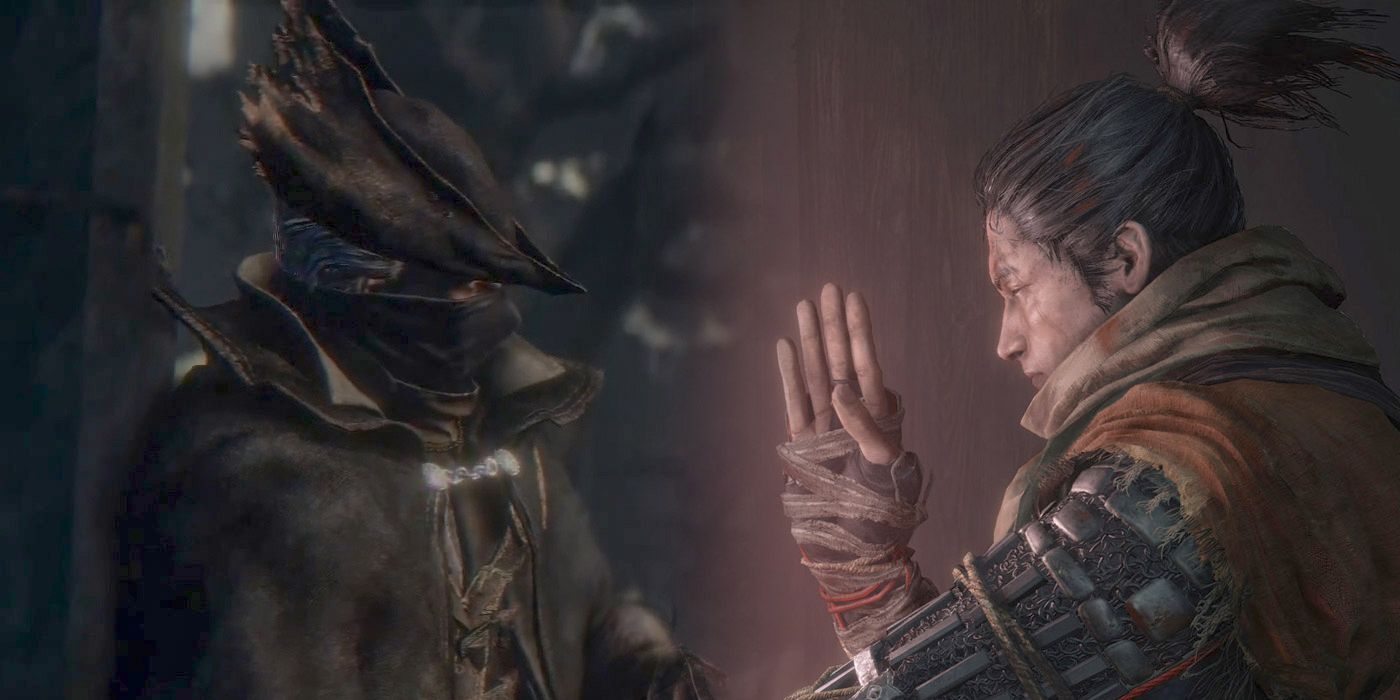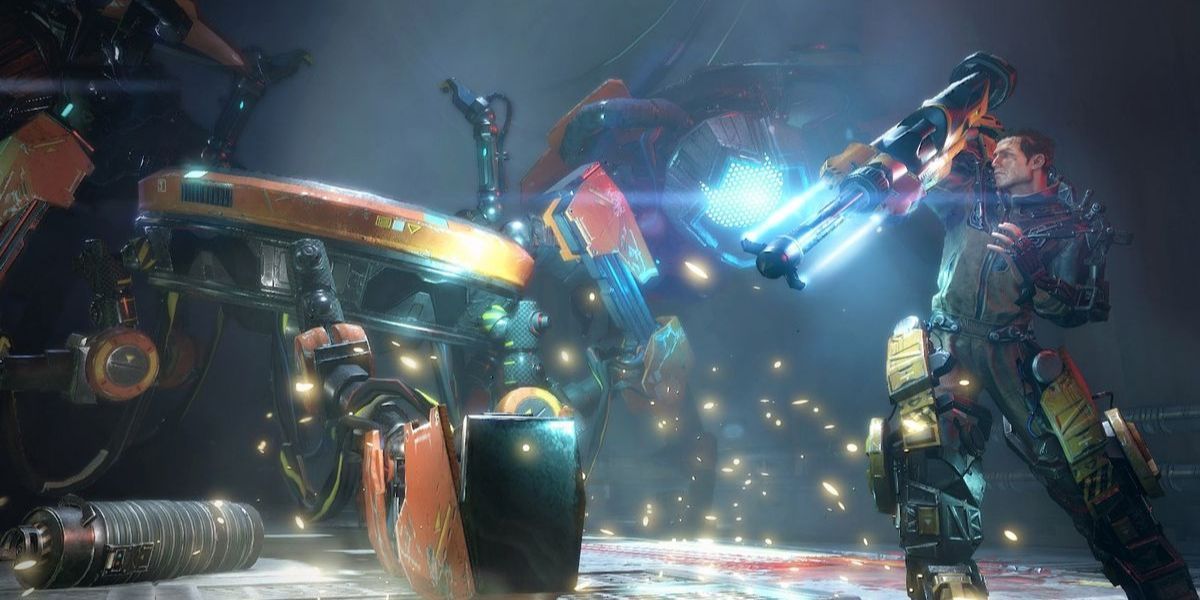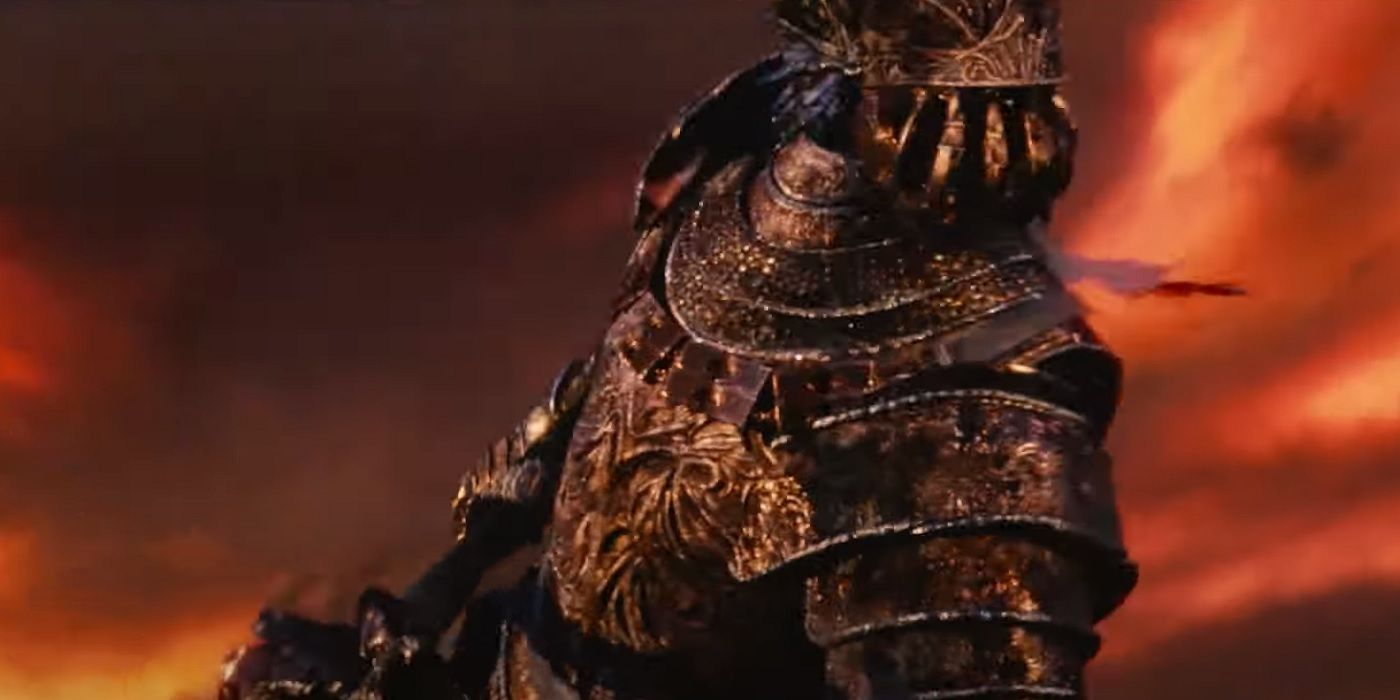The Surge 2’s Parry System Should Be a Blueprint for Elden Ring

One aspect of the success of FromSoftware's style of gameplay is the way that it draws other developers to try their hand at delivering the same interwoven level design, punishing souls economy, and brutally difficult bosses. While many copycats have found varying levels of success in the Soulslike genre, Deck13 Interactive's The Surge might be one imitator that can be a teaching tool for the next Dark Souls or Elden Ring.
There are a number of ways that both The Surge and its sequel succeed in emulating the FromSoftware experience, and several others where the game completely misses the mark. Of those successes, the Parry system from The Surge 2 might act as a great blueprint for how Elden Ring should approach one of the most engaging sections of FromSoftware's iconic combat.

To start with how The Surge 2's parry can work well in Elden Ring, it might help to deconstruct how previous games like Bloodborne and Sekiro address combat and defending against enemy attacks. Specifically, the way that both of these games focus on dodges and parries in order to avoid damage, with evasion being more prevalent in Bloodborne than its successor. However, the key for a proper parry in either game is timing, making sure to ready the player character's guard at the exact moment that an attack would land.
This takes different forms between the two games, with Bloodborne's firearms acting as more of a pre-emptive counter than a defensive redirect like Sekiro's parry. The differences continue as the more recent title focusses on keeping blocks in rhythm and rewards attentive players with the ability to keep their defenses up indefinitely as long as they can hold the pace. In the case of The Surge 2, a lot of these key aspects are maintained, but there is an added wrinkle that forces players to pay close attention to each enemy's attacks.

The original The Surge tried to implement a different type of evasion and defensive tactics with the vertical dodging that players could perform by flicking the right analog stick up or down while blocking. While the concept was sound, the general unresponsiveness of the feature and the way that many enemies attacked with vertical or mid-level attacks that couldn't be countered this way may other methods more useful. As a result, this was changed when The Surge 2 launched with a complete overhaul on the directional defense system leaning more towards parries than dodges.
While this new method isn't perfect, it forces the player to look in the direction and move into an oncoming attack instead of away from it, which combines with a sensational new animation and sound to indicate success. This all winds up coming together to make parrying feel great, even when the player is landing ten in a row with little to no issue thanks to how easily readable enemies are, or some assistance with the Directional Block Analyzer implant. When everything is brought together, the whole system adds a new level to what FromSoftware had already developed in the deeper combat mechanics of Sekiro and other similar titles.

Not much is known about the gameplay of Elden Ring, with everything from combat to exploration coming through speculation about what FromSoftware actually means when mentioning things like the open field and ridable mounts. However, most fans of the developer expect something along the lines of a Soulslike title, with stamina-based combat that leans heavily on an exchange of blows between the player and enemies. In most cases this would involve some sort of defensive tactics, such as dodging, blocking, or parrying, and the company's past reliance on timing has shaped most fan expectations.
Of course, if Elden Ring expects to shake up the Soulslike genre, the game is going to have to look for ways to improve and compound on these systems, instead of just repeating old tricks. To this end, The Surge 2's directional parrying could be a quality springboard for how to enhance parries, with extra button inputs and an incentive to jump into attacks for maximum efficiency. Previous titles have tiptoed into this type of feature already, such as Bloodborne's I-framed dodges and Sekiro's Mikiri Counter that require specific commands for specific attacks.

An important part of counters in combat systems in a game like Elden Ring is giving players added incentive to master the features aside from a slight reward in damage output. One example of this in The Surge 2's directional parries is the way that the game offers a massive risk/reward for correctly anticipating where the enemy is going to strike. If the player intuits the attack incorrectly, then they immediately take full damage, as if they weren't blocking at all, but a successful parry gives an opportunity to dish out substantial damage.
This is naturally nothing new for FromSoftware titles, with Dark Souls offering ripostes and Bloodborne offering visceral attacks as a reward for taking the risk of having to tank an attack on a failed parry. All of these require a level of commitment to face off against an enemy and risk eating some damage, but The Surge 2 takes it a step farther by actually forcing players to put the guard that already has to be up at risk. It's the extra level of input and counterintuitive aspect of pushing in towards an attack that makes pulling off these parries so satisfying, and could be utilized if Elden Ring is looking for how to improve defensive combat.

Another important aspect that FromSoftware can learn from the underrated The Surge 2, however, is how the game falls short when implementing the parrying system in the first place. As mentioned above, nailing perfect parries can be trivialized with the Directional Block Analyzer, something that players and reviewers praise in the early hours of the game, but detracts from the more complex fights. It's a level of hand holding that works well to direct the player how to engage with the mechanic at first before quickly becoming a crutch that can hinder a quality build.
Enemy telegraphing and the rhythm of attacks are already built so strongly around giving the player enough time to read what is coming that the implant isn't even always necessary. Worse still is the way that the callouts for where to block can completely ruin the enemies that are made to intentionally feign attacks and try to trick the skills players should have developed if they weren't using the Directional Block Analyzer. So, if Elden Ring is looking to not disappoint with this aspect of combat, the general FromSoftware approach of letting players learn by dying might actually be the better option.
The Surge 2 is available now for PC, PS4, PS5, Xbox One, and Xbox Series X/S.

Post a Comment